Mike Phillips
Active member
- Dec 5, 2022
- 51,004
- 6
Review: BLACKFIRE Metal Sealant
BLACKFIRE Metal Sealant
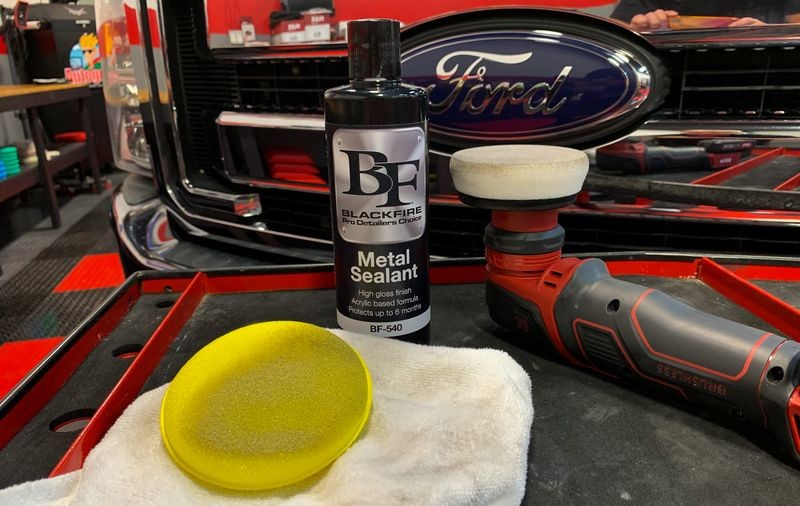
What it is?
A liquid acrylic-based metal sealant.
What does it do?
Seals the surface of metal surfaces as well as clearcoated and painted metal surfaces.
When to use it?
When metal surfaces are new and in excellent condition or after neglected surfaces have been polished to like-new appearance.
Why to use it?
Protect metal surfaces from corrosion, deterioration and oxidation as well as restore and maintain beauty, shine and brilliance.
Special Instructions
Do not use on hot surfaces or in full sun. For neglected surfaces, first polish using BLACKFIRE Metal Polish. For surfaces in new and excellent condition, wash and dry or wipe clean first.
My comments...
I've polished a LOT of metal in my life. There are scads of metal polishes on the market, most work good, some not so good and some work great! What there is NOT a lot of on the market are sealants for metal. So most people that own something that has some type of polished metal surface understand and are used to the idea that after polishing, the results will look good for a while, but sooner than later it will be necessary to re-polish in order to maintain the same shine, luster and brilliance.
So a dedicated sealant is much needed and a welcome new product for owners of cars, trucks, boats, motorhomes and motorcycles.
I have not reviewed many metal sealants in my life because as mentioned above, historically there have not been a lot of metal sealants on the market. You can find a metal polish just about anywhere, but sealants? Not as easy. Normally I like to use a set of oxidized aluminum wheels that have already performed the polishing work to for showcasing a metal sealant. But this is a short week for me as Yancy and I have been busy shooting b-roll video for "My Classic Car" and we also had a special guest here to shoot a new video for their upcoming new product launch. So I walked the parking lot here at Autogeek looking for something to test this product out on and found my co-worker Will's Ford Super Duty Truck.
Normally when I work on cars part of the process is washing the car. No time for that on this day, plus this thing is HUGE and it's around noon here in South Florida, that means it's baking hot outside! So outside of my normal practice to start with a freshly washed vehicle, (Will would be so lucky to get a free truck wash), I tested this product out on Will truck just like you see it. BUT - that's okay because the info given to me about this product states,
It conveniently has its own level of light cleaning ability to finish up what the other products may have left.
So besides sealing the surface we'll see if it will also remove the road film off the front chrome grill and grill sides.
Here's my victim....
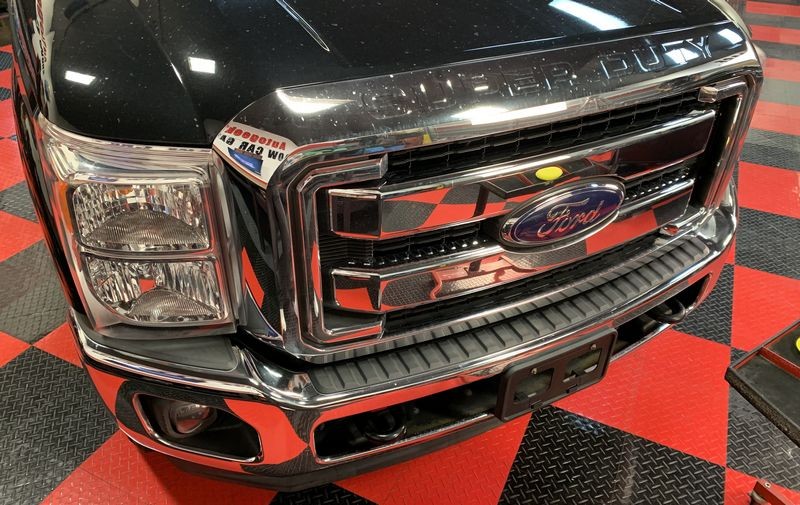
Yep... she's a daily driver - just like most people own... (and drive)

From this angle, it's hard to see the front chrome accurately...

Here we go, much better...

For hand application, you can use a foam or microfiber applicator pad. I choose foam for decorative chrome on most cars.

Here's a good amount to cover the front top area...

There's also dead, dried-on bugs and it peeled these away no problem.
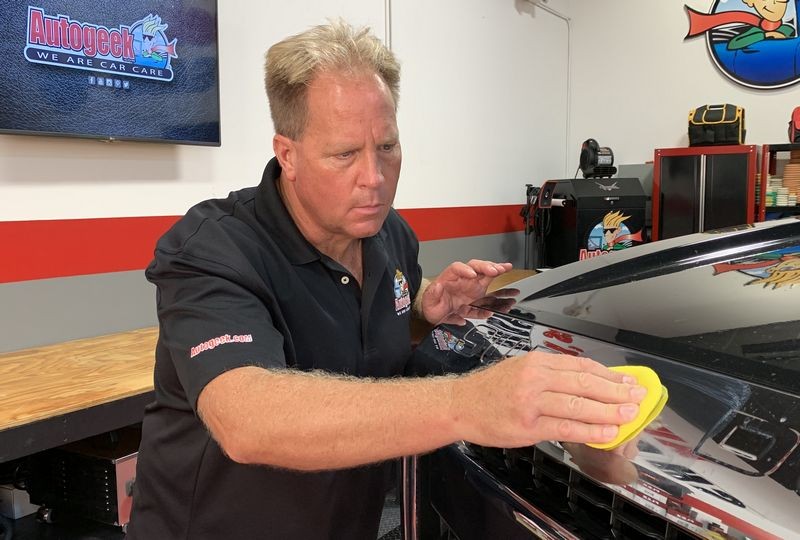
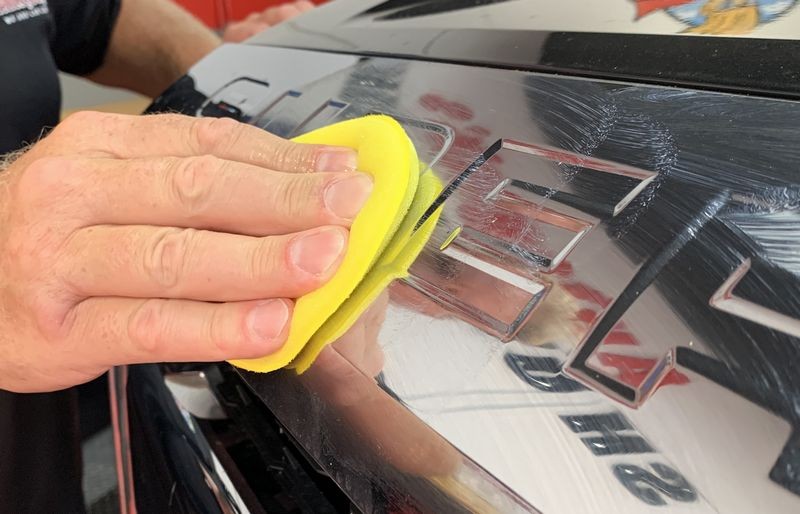
I can see a little road film coming off and onto the pad....

Next I'll test by machine - I just happen to have my FLEX PXE handy...

I think I'm on the 1 setting and using a Lake Country foam polishing pad....
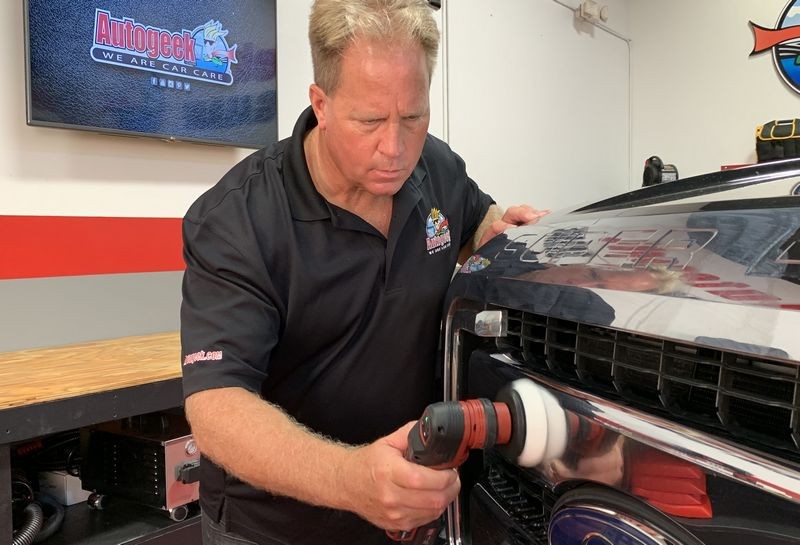

Might as well get the Blue Oval....
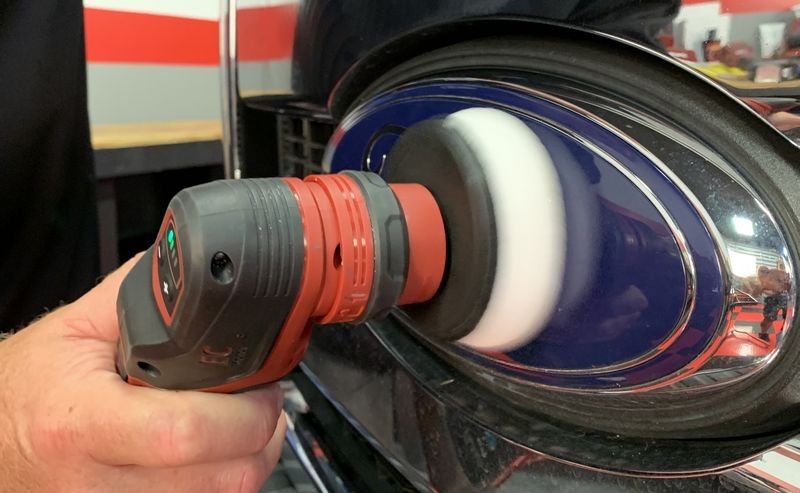
I see quite a bit of road film and oxidation/tarnish coming off....

IMPORTANT
Directions state to let if fully dry before removing.
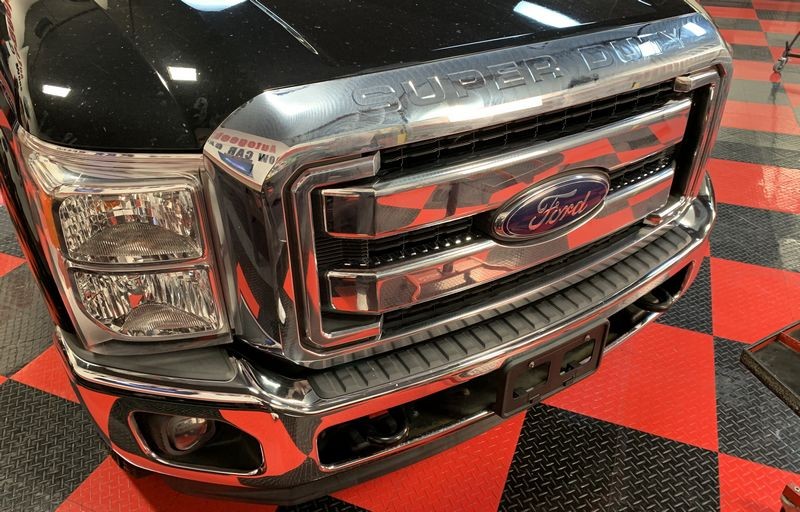
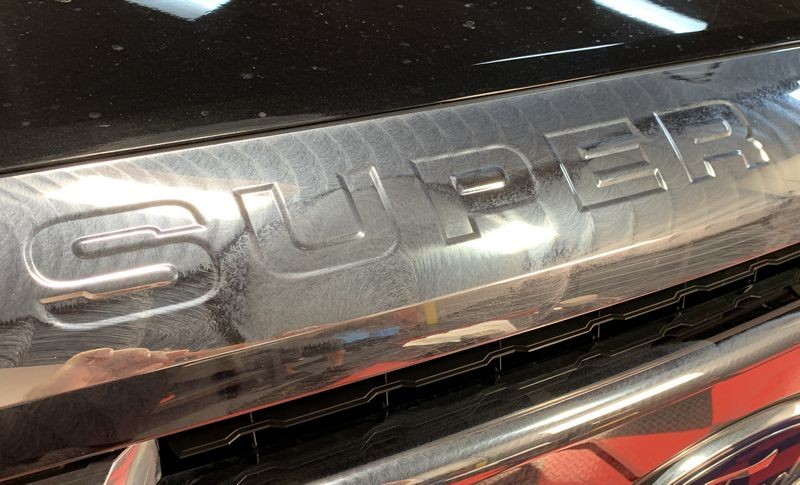
Then remove with a clean, microfiber towel.



And here's the final results...

Chrome looks brand new! And the surface is sealed and protected for up to 6 months.
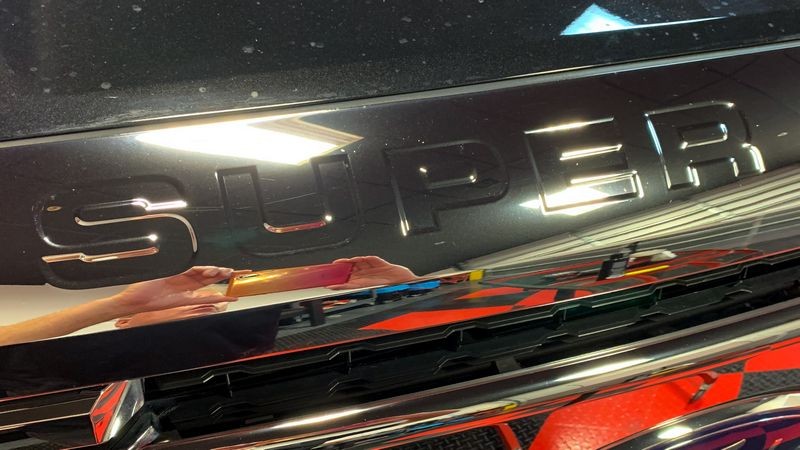
The Ford Blue Oval emblem came out real nice. I think this is chrome and plastic as the blue portion is plastic.

The side of the grill looks just like a mirror!
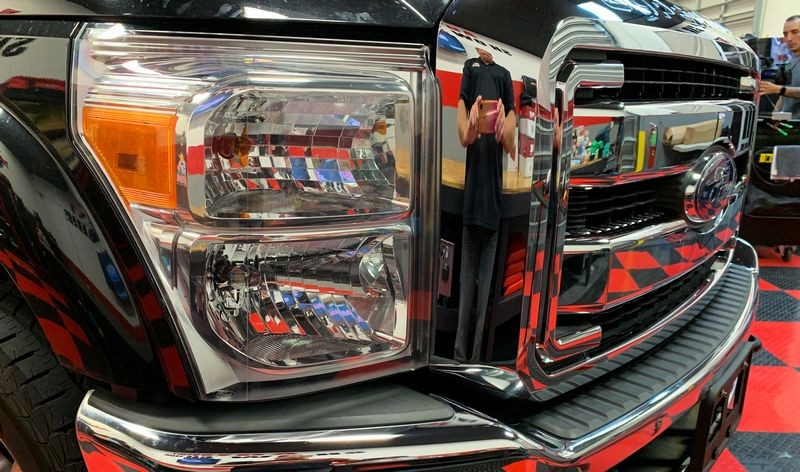
And the side of the grill makes me look much taller and skinnier than I really am.

BLACKFIRE Metal Sealant
An acrylic based sealant for all metal surfaces, paint and from my testing above, appears to also be safe for smooth, hard plastic surfaces.

Review
The true review for this type of product will be to see how well and how long the treated surfaces hold up. Because I did this on Tuesday and as I type it's Thursday, I'll continue to monitor the truck and the results and then update this review.
As for the application of the product, the performance of the application and the wipe-off, it worked GREAT! and the chrome surfaces I worked on look brand new. While chrome is very hard, it still scratches easily. So it's important to use both polishes and as shown here, sealants that are non-abrasive so you don't put scratches into the chrome. The results from this project show the sealant to be not only safe for chrome but also safe for plastic and to me, this means it's safe for pretty much any surface it's recommended for use on.
There are no foul odors while applying and wipe-off is super easy. This is a great complimentary product for the BLACKFIRE Metal Polish or any metal polish. You can find my review for the BLACKFIRE Metal Polish here.
On Autogeek.com
BLACKFIRE Metal Sealant
Orange Heavy Duty Nitrile Gloves - Pick your size

BLACKFIRE Metal Sealant
What it is?
A liquid acrylic-based metal sealant.
What does it do?
Seals the surface of metal surfaces as well as clearcoated and painted metal surfaces.
When to use it?
When metal surfaces are new and in excellent condition or after neglected surfaces have been polished to like-new appearance.
Why to use it?
Protect metal surfaces from corrosion, deterioration and oxidation as well as restore and maintain beauty, shine and brilliance.
Special Instructions
Do not use on hot surfaces or in full sun. For neglected surfaces, first polish using BLACKFIRE Metal Polish. For surfaces in new and excellent condition, wash and dry or wipe clean first.
My comments...
I've polished a LOT of metal in my life. There are scads of metal polishes on the market, most work good, some not so good and some work great! What there is NOT a lot of on the market are sealants for metal. So most people that own something that has some type of polished metal surface understand and are used to the idea that after polishing, the results will look good for a while, but sooner than later it will be necessary to re-polish in order to maintain the same shine, luster and brilliance.
So a dedicated sealant is much needed and a welcome new product for owners of cars, trucks, boats, motorhomes and motorcycles.
I have not reviewed many metal sealants in my life because as mentioned above, historically there have not been a lot of metal sealants on the market. You can find a metal polish just about anywhere, but sealants? Not as easy. Normally I like to use a set of oxidized aluminum wheels that have already performed the polishing work to for showcasing a metal sealant. But this is a short week for me as Yancy and I have been busy shooting b-roll video for "My Classic Car" and we also had a special guest here to shoot a new video for their upcoming new product launch. So I walked the parking lot here at Autogeek looking for something to test this product out on and found my co-worker Will's Ford Super Duty Truck.
Normally when I work on cars part of the process is washing the car. No time for that on this day, plus this thing is HUGE and it's around noon here in South Florida, that means it's baking hot outside! So outside of my normal practice to start with a freshly washed vehicle, (Will would be so lucky to get a free truck wash), I tested this product out on Will truck just like you see it. BUT - that's okay because the info given to me about this product states,
It conveniently has its own level of light cleaning ability to finish up what the other products may have left.
So besides sealing the surface we'll see if it will also remove the road film off the front chrome grill and grill sides.
Here's my victim....
Yep... she's a daily driver - just like most people own... (and drive)
From this angle, it's hard to see the front chrome accurately...
Here we go, much better...
For hand application, you can use a foam or microfiber applicator pad. I choose foam for decorative chrome on most cars.
Here's a good amount to cover the front top area...
There's also dead, dried-on bugs and it peeled these away no problem.
I can see a little road film coming off and onto the pad....
Next I'll test by machine - I just happen to have my FLEX PXE handy...
I think I'm on the 1 setting and using a Lake Country foam polishing pad....
Might as well get the Blue Oval....
I see quite a bit of road film and oxidation/tarnish coming off....
IMPORTANT
Directions state to let if fully dry before removing.
Then remove with a clean, microfiber towel.
And here's the final results...
Chrome looks brand new! And the surface is sealed and protected for up to 6 months.
The Ford Blue Oval emblem came out real nice. I think this is chrome and plastic as the blue portion is plastic.
The side of the grill looks just like a mirror!
And the side of the grill makes me look much taller and skinnier than I really am.
BLACKFIRE Metal Sealant
An acrylic based sealant for all metal surfaces, paint and from my testing above, appears to also be safe for smooth, hard plastic surfaces.
Review
The true review for this type of product will be to see how well and how long the treated surfaces hold up. Because I did this on Tuesday and as I type it's Thursday, I'll continue to monitor the truck and the results and then update this review.
As for the application of the product, the performance of the application and the wipe-off, it worked GREAT! and the chrome surfaces I worked on look brand new. While chrome is very hard, it still scratches easily. So it's important to use both polishes and as shown here, sealants that are non-abrasive so you don't put scratches into the chrome. The results from this project show the sealant to be not only safe for chrome but also safe for plastic and to me, this means it's safe for pretty much any surface it's recommended for use on.
There are no foul odors while applying and wipe-off is super easy. This is a great complimentary product for the BLACKFIRE Metal Polish or any metal polish. You can find my review for the BLACKFIRE Metal Polish here.
On Autogeek.com
BLACKFIRE Metal Sealant
Orange Heavy Duty Nitrile Gloves - Pick your size
